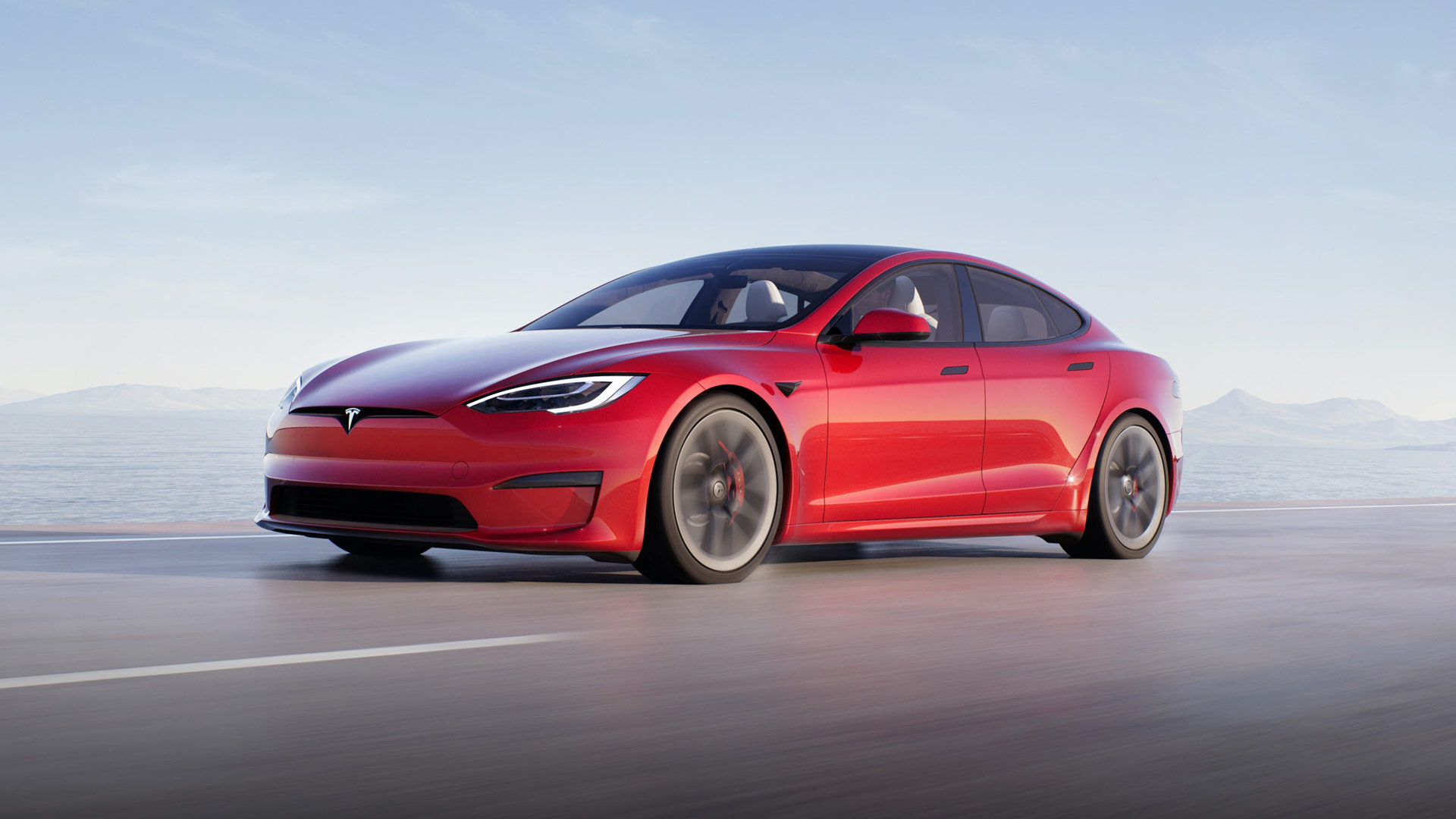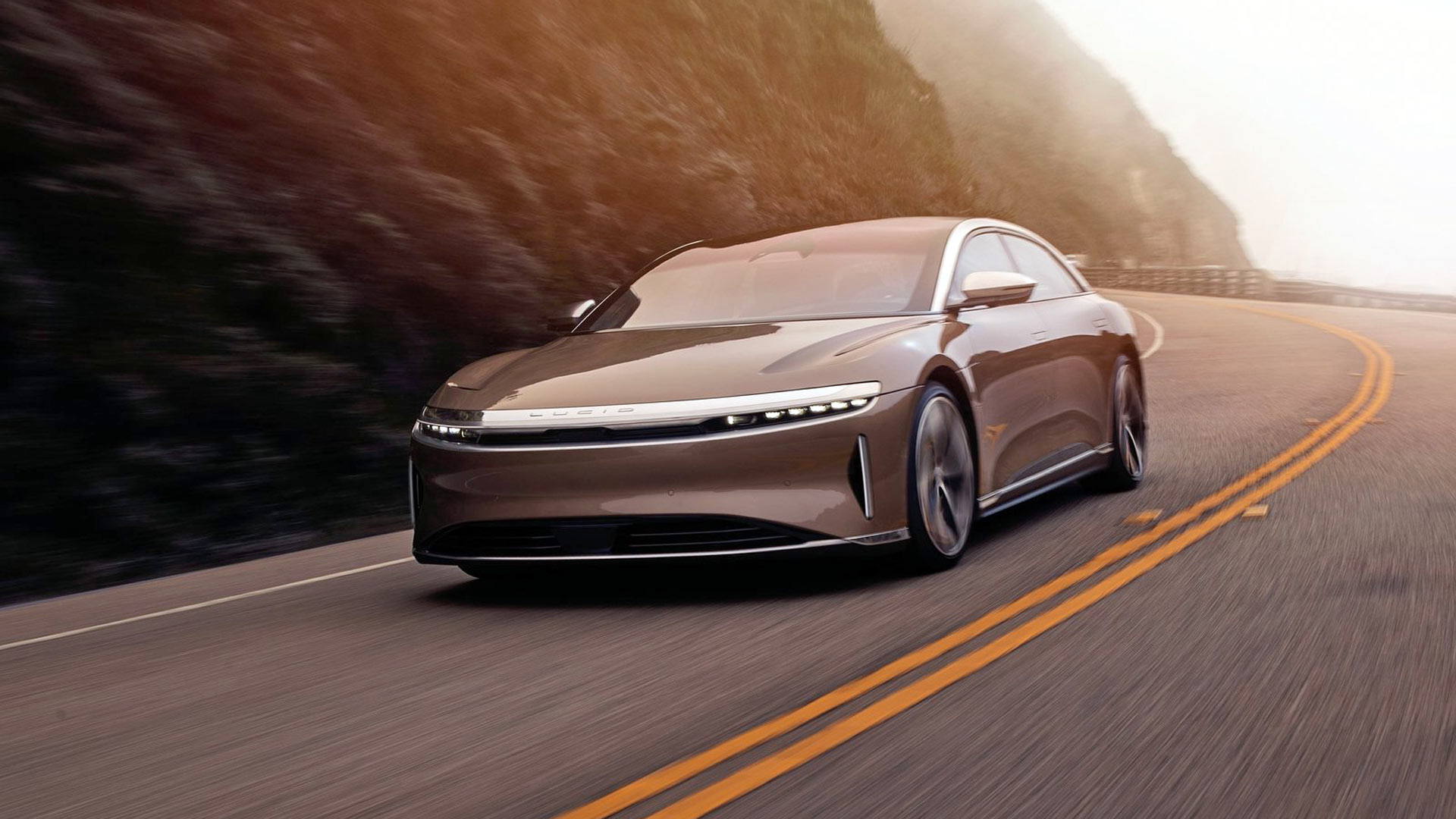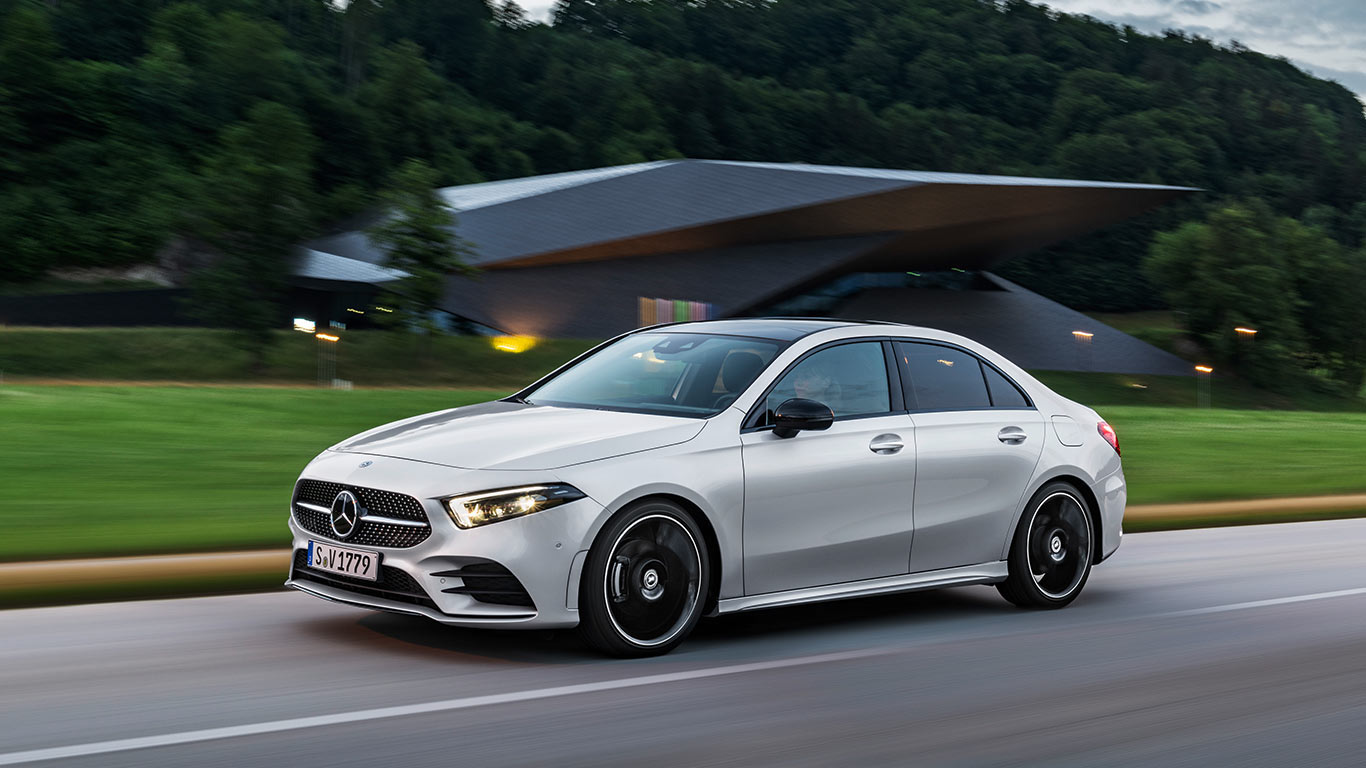Most Aerodynamic Shape For A Car
-

Born slippy - The most aerodynamic new cars for 2021
© Mercedes-BenzMercedes-Benz has reclaimed the title of the world's most aerodynamic new car with the EQS. The constant demand to improve fuel economy, and performance, means car manufacturers are placing even greater importance on aerodynamics.
Electric vehicles designers are also heavily focused on maximising every last mile from a fully charged battery.
To compare the aerodynamics of each car, we have considered their Cd value. This is a measure of the car's drag coefficient, with a lower value meaning it will be more aerodynamic. Other measures exist, but the Cd value is the one most commonly published by manufacturers.
Join us for a look at the most aerodynamic cars on sale around the world.
-

Mercedes-EQ EQS - 0.202 Cd
© Mercedes-EQIn creating the EQS, Mercedes is not only building a luxury electric flagship, but launching the new Mercedes-EQ brand. It means the company has gone all-out when designing this big saloon. It can now claim the prize as being the most aerodynamic new car in the world.
Although a relative of the conventional S-Class, the EQS has been built on an entirely brand-new platform. That has allowed the designers to ensure maximum aerodynamic efficiency from the start, obsessively honing the shape of the EQS in the wind tunnel.
Mercedes has designed the A-pillar to reduce noise and improve aerodynamics, fitted special underbody cladding for maximum efficiency, and installed wheel spoilers front and rear. The various wheel options are also chosen for optimal streamlining.
-

Tesla Model S Plaid - 0.208 Cd
© TeslaTesla likes to grab headlines and continually improve its products. The latest high-performance version of the Model S managed to do both, boasting the best Cd figure until the Mercedes-EQ silently rolled into town.
Revealed earlier this year, the Plaid model uses three electric motors to generate over 1,000 horsepower. Tesla claims a top speed of 200mph, with the Model S also said to deliver an estimated range of 390 miles when fully charged.
Helping the Plaid cut through the air is a bespoke front splitter, new rear diffuser, and flared wheelarches to reduce drag from the wheels. A subtle new spoiler has been added to the boot, too.
-

Lucid Air - 0.21 Cd
© LucidMotivation for Tesla's Model S improvements may have come from the Lucid Air. The startup company claimed its forthcoming electric car set a new benchmark for aero efficiency, with a 0.21 Cd value.
Lucid has employed ex-Formula One designers to improve the aerodynamics of its luxury EV. Features include side air intakes to smooth airflow around the front wheels, along with a smooth underbody.
A prototype version of the Lucid Air is said to have reached a top speed of 235mph.
-

Porsche Taycan Turbo - 0.22 Cd
© PorschePorsche's first all-electric sports car not only looks futuristic, but also comes with a healthy dose of aerodynamic efficiency. Refining the shape of the Taycan to reduce drag delivers benefits for both performance and battery range.
Although not the fastest version of the Taycan, accelerating from 0-62mph in 3.2 seconds is still suitably rapid. Despite this, it can cover up to 280 miles based on official testing.
-

Mercedes-Benz A-Class Saloon - 0.22 Cd
© Mercedes-BenzWhen launched just two years ago, the A-Class grabbed the prize for being the most aerodynamic car on sale. The pace of progress, especially from electric car manufacturers, has seen it slip down the rankings.
A Cd value of 0.22 is still deeply impressive, though. From an enclosed underbody to avoid disrupting the airflow, to ensuring the headlights seal flush with the bodywork, the efforts of the engineers have been huge.
-

Mercedes-Benz S-Class - 0.22 Cd
© Mercedes-BenzFrom the smallest Mercedes-Benz saloon to the largest, there is seemingly no halt in the German company's quest for aerodynamics. Announced last year, the new seventh-generation S-Class flagship achieves an impressively low 0.22 Cd value.
Mercedes has concentrated on managing airflow around the front bumper, along with countless small improvements. These include 'aerostripes' beneath the side mirrors, and even changing the shape of cladding found on the rear suspension arms.
-

BMW 5 Series Efficient Dynamics Edition - 0.22 Cd
© BMWIn common with many of the cars featured on this list, those which top the charts for aero efficiency are often special models built for lowered CO2 emissions. The pursuit of greater fuel economy and carbon output has forced manufacturers to spend even longer in the wind tunnel.
Developments like active shutters for the trademark kidney grille, and aerodynamically enhanced alloy wheel designs, are some of the tools used by BMW to reduce drag on the latest 5 Series saloon.
-

Alfa Romeo Giulia Advanced Efficiency - 0.23 Cd
© Alfa RomeoWhile undoubtedly pretty, ticking the right options box can also make the latest Alfa saloon ever slipperier when it comes to cutting through the air.
Major changes include the ride height of the Giulia being lowered to aid aero efficiency, along with specially designed 16-inch alloy wheels. Completing the package are tyres chosen for reduced rolling resistance.
All these measures help the Advanced Efficiency Giulia deliver improved fuel economy and range.
-

Tesla Model 3 - 0.23 Cd
© TeslaAs the smallest Tesla, the Model 3 has all the aero technology from its bigger brothers, but in a condensed package. Not having a conventional combustion engine to cool and feed oxygen to gives car aerodynamicists far greater freedom when it comes to design.
No more gaping grilles means smoother airflow, which is important when you need to extract every last mile from your battery. In Long Range trim, the Model 3 can officially travel up to 353 miles when fully charged.
-

Mercedes-Benz E-Class Saloon - 0.23 Cd
© Mercedes-BenzMercedes-Benz has a wind tunnel and they're clearly not afraid to use it when it comes to refining their range of saloon cars. In fact, it was the E-Class from 1984 that marked the start of Stuttgart's obsession with reducing drag. That car from almost four decades ago achieved a Cd figure of 0.27. This was due to a tapered rear end and a subtle boot spoiler.
Despite the latest E-Class being notably larger, advances in aero design mean it surpasses its historic predecessor with an impressive 0.23 figure.
-

BMW 3 Series - 0.23 Cd
© BMWThe BMW 3 Series is one of the most popular compact executive saloons in the world. As such an important car for the brand, BMW has worked hard to ensure it delivers when it comes to aerodynamics. The latest 'G20' version has seen the drag coefficient of the 3 Series fall from 0.26 to 0.23 in certain trim levels.
In particular, BMW singles out the diesel 320d as benefiting the most from aerodynamic improvements. These include active front grille flaps, an almost completely flat underbody, and 'air curtains' to direct airflow.
-

Mercedes-Benz C-Class Saloon - 0.24 Cd
© Mercedes-BenzAnother new Mercedes-Benz saloon? Yes indeed, and the C-Class is the newest of them all. Styling influences have clearly been taken from the smaller four-door A-Class, along with a drive to keep things aero efficient.
Mercedes-Benz points out that despite the new C-Class growing substantially in size, it has retained the same 0.24 Cd value as the previous model.
-

Audi E-tron GT Quattro - 0.24 Cd
© AudiAudi has expanded its range of electric vehicles with the launch of the impressive new E-tron GT. With two electric motors, and a substantial battery pack beneath the floor, the E-tron GT promises a range of up to 300 miles.
The equivalent of nine million working hours were spent on computer simulations to hone the aerodynamics of the E-tron GT. This includes the use of active grille shutters, wheels with aero blades, and an active rear spoiler.
-

Toyota Prius - 0.24 Cd
© ToyotaThe teardrop shape on the latest Prius is nothing new, but the fourth-generation car underwent significant changes to improve on its predecessor. The roof line was moved forward, and extra underbody panels were installed to find extra aero efficiency.
It worked, meaning that despite the aggressive lines and angles, the newest Prius betters the old version by 0.02 Cd. In the world of maximising fuel economy, that tiny number can mean a massive difference in range.
-

Hyundai Ioniq - 0.24 Cd
© HyundaiIt should be no surprise that Hyundai's big rival for the Prius is clothed in a teardrop-influenced shape. Designed to channel air effectively over the hatchback body, there are numerous carefully chosen contours and creases on the Ioniq.
With three different versions of the Ioniq available, Hyundai has distinguished between the hybrid and pure electric models. Hybrids feature a three-stage active front grille, while the electric version uses a sleeker solid fascia.
-

BMW 7 Series - 0.24 Cd
© BMWBy now you should be sensing a theme, especially when it comes to German cars from the same manufacturer. Ideas used on the current 7 Series have been copied for the smaller 5 Series, seeing both reduce drag levels.
A notable attribute of the 7 Series is active air suspension. Engaging Sport mode means the ride height of the largest BMW is lowered, aiding aerodynamic efficiency. The requisite grille shutters and air curtains are also present, helping the big four-door along.
-

Mercedes-Benz B-Class - 0.24 Cd
© Mercedes-BenzAs the compact MPV version of the Mercedes-Benz A-Class, space and practicality are the main reasons for buying a B-Class. Yet, despite the boxy body, it manages to deliver an impressive 0.24 Cd value.
Small details like sealing around where the headlights meet the bodywork, plus a new rear spoiler, have all contributed. Active shutters for the front grille add to the aero savings, too.
Along with reduced fuel consumption, it means less wind noise for those inside the B-Class.
-

Tesla Model X - 0.25 Cd
© TeslaAside from the Tesla Model X, you'll notice there is a general absence of luxury SUVs on this list. Their taller, boxier, shapes make cutting through the air harder. Aerodynamic efficiency naturally suffers as a result. A Hummer H2 could only achieve a 0.57 Cd value.
With no internal combustion engine, the Model X benefits from not needing vents to cool it. A smooth underbody, and streamlined styling inspiration from the rest of the Tesla range, completes the job.
-

Audi A4 - 0.25 Cd
© AudiHaving won the Le Mans 24 Hours race an amazing 13 times, Audi knows a thing or two about aerodynamics. It translates into ensuring the latest A4 saloon can cut through the air as cleanly as possible.
Previous versions of the A4 were able to offer a Cd value as low as 0.23. However, the most recent facelifted model still delivers a respectable 0.25 Cd.
-

Mercedes-Benz A-Class Hatchback - 0.25 Cd
© Mercedes-BenzThe new A-Class hatchback may have beaten its saloon brother to the market, but it cannot quite match the four-door when it comes to aerodynamics. The stumpier tail of a hatchback disrupts the air more than a sleek saloon, causing more drag.
However, the new A-Class is still one of the best hatchbacks on this list, so we're sure Mercedes-Benz isn't too concerned.
-

Ford Focus Saloon - 0.25 Cd
© FordProving the point again that saloons outperform hatches when it comes to drag coefficient is the new Ford Focus. It beats the more conventional hatchback model for aerodynamics, which can only record a Cd value of 0.275.
Ford introduced technology such as active front grille shutters on the previous-generation Focus, and has clearly worked hard to ensure this model improves things further.
-

Porsche Taycan Turbo S - 0.25 Cd
© PorscheThe flagship Taycan isn't quite as slippery as the (slightly) slower Turbo, but who's complaining? It can still travel over 200 miles when fully charged, according to official figures.
Porsche's development team spent around 1,500 hours in the wind tunnel, and innovative features include large air inlets around the headlights. These are said to 'guide the air like a curtain over the front wheel housings'.
-

Audi E-tron Sportback - 0.25 Cd
© AudiAs the coupe version of the regular Audi E-tron electric SUV, the Sportback model manages to deliver improved aerodynamics. The standard mix of drag-reducing measures include a flat underbody, active grille vents, and wheels chosen for aerodynamics and aesthetics.
In certain markets, buyers can also opt for virtual exterior mirrors. These wing-shaped supports use small cameras, replacing the bulkier conventional mirrors.
-

Skoda Octavia - 0.25 Cd
© SkodaThe liftback shape of the fourth-generation Skoda Octavia helps it win big when it comes to aerodynamics. Compared to the related Volkswagen Golf, it manages to record a commendable 0.25 Cd value when rounded up.
Helping the Octavia maximise aerodynamic efficiency are Skoda's first use of active grille vents. Special alloy wheel designs, and even making the rear windscreen wiper an option, all contributed.
The more spacious Octavia Estate achieves a respectable 0.26 Cd, as well.
-

Audi A6 TFSI e - 0.26 Cd
© AudiAside from making all versions of the new A6 saloon mild-hybrids, Audi has also ensured that it comes close to the aerodynamic ability of rivals from BMW and Mercedes-Benz.
Improving fuel economy matters to executive buyers, but so does a quiet interior. Ensuring air flows smoothly around the car helps reduce wind noise, making the experience in the cabin more refined.
-

Audi A8 - 0.26 Cd
© AudiAudi's latest flagship is packed with new technology. Autonomous driving capabilities might be the big sell for the A8, but aero cleanliness is still important.
Despite the bold front grille, the new A8 still manages to be aerodynamic through a number of detailed tweaks, like specially designed exterior mirrors.
-

Audi Q4 Sportback E-tron - 0.26 Cd
© AudiWe finish with another Audi, the new Q4 Sportback E-tron. The company is on a mission to launch multiple new electric models, with the Q4 E-Tron offered in both conventional SUV and more styling Sportback guises.
It is the Q4 Sportback E-tron that manages to deliver the best aerodynamic figures, thanks to a smooth underbody and adjustable air intake grilles. Narrow bars beneath the headlights channel airflow along the edges of the car.
The conventional SUV Q4 SUV records a slightly poorer, but still impressive, 0.28 Cd.
Most Aerodynamic Shape For A Car
Source: https://www.motoringresearch.com/slideshow/the-most-aerodynamic-new-cars-in-the-world/

0 Komentar